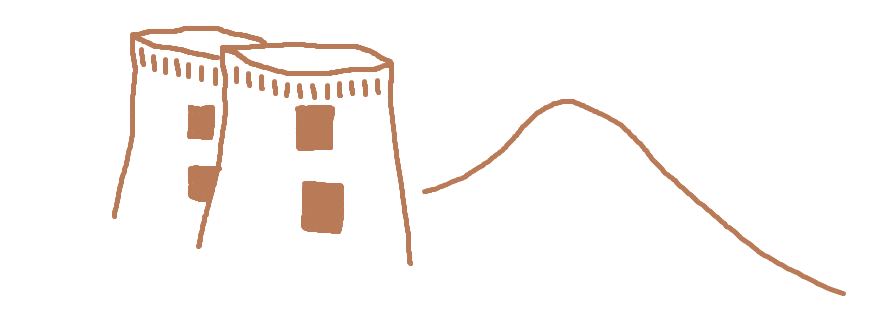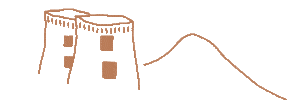The situation in Sri Lanka stabilized even more in the second half of 2022. During the summer of 2022, travelers appreciated that they had almost everything to themselves, even in very popular areas. In July and August, they already had a priority purchase of fuel, but there was still often not enough of it in remote areas. During the fall of 2022, the Sri Lanka safety and situation practically returned to normal from the point of view of tourists.
Sri Lanka situation
Easy for tourists. Hard for locals.
You can often come across articles like “Sri Lanka’s situation is critical…” etc. in media. These articles often bend reality a lot in order to attract more readers. The reality is very different. We were in Sri Lanka in the summer of 2022 and in the winter of 2022/23 and we did not experience any violence or other potentially dangerous situations. We visited local families who invited us to their homes for dinner. We bought medicine against flu or cold at pharmacies. Neighbor was operated on the appendix and in a few days she was fine at home. In the summer, for example, it was difficult to get some goods (such as household items) due to unavailable transport.
Thanks to the bad management of the government, the exchange rate against the dollar fell by 80% and thus practically everything became nearly double expensive. Gasoline became more expensive 4 times, which caused local vegetables and other local products to become more expensive as well.
The foreigner receives more Rupees thanks to the favorable exchange rate, so that he often does not notice the increase at all and can thus enjoy all the attractions. Locals, on the other hand, often did not earn even for transportation to work and had to find another job, others did not even have a fish for dinner.
Lack of dollars is key
The government doesn't have enough dollars to import and Rupees cannot be freely exchanged. Tourists are thus the best way to improve the situation. All the locals are very tourists-friendly.
Due to the fact that the country went technically bankrupt (similar to Greece once upon a time), suppliers from abroad suddenly insist on advance payments. For gasoline, oil, gas, medicine. For everything they used to deliver on an invoice with some maturity. In addition, some require payment for previously delivered goods before they send new goods. Again, a big concern for locals, but tourists hardly recognize it.
Sri Lanka Safety on the streets and elsewhere
Tourists on the streets feel safe. Local people often seem a bit stressed, but they are certainly not aggressive towards anybody.
Tourists (especially white ones) are welcomed by all and often given various advantages. For example, we were able to fill up with diesel several times without queuing, even though locals were waiting there. Everyone realizes that a satisfied tourist will help the country faster than anyone else. Today, there are no longer queues for petrol at all, and travelers from Europe in December 2022 could practically no longer recognize that there was a crisis in the country. Transport, hospitals, schools, police, shops and, of course, hotels and the entire tourism sector are functioning.
If you are planning a trip, don’t worry and come. Sri Lanka safety and overall situation is under control. You can travel without problems even without a travel agent, as you were used to before.
What you heard about 2022
In the spring of 2022, almost everything collapsed in Sri Lanka. People rebelled and overthrew the government. It was very difficult until July, since then it has started to stabilize.
How did it actually happen? A certain form of socialism works in Sri Lanka and, like in Europe, populists came to power, who promised people, for example, to lower the price of gasoline below the market price (something like electricity in some EU countries now). They subsidized it with income from tourism and from several million foreign workers who kept sending home the dollars they earned. With covid, the flow of money ended and no one had the courage to make increase prices. The dollars started running out. The government therefore looked for ways to limit imports and came up with a very unfortunate solution. They banned chemical fertilizers, saying that the land would be 100% eco and fertilize everything with compost, etc. It sounded great, but it soon became clear that the harvest was half. Since the export of tea, coconuts, spices and other agricultural products is essential for the country, this made the dollar problem even worse and many families did not even have enough food. Thus began the protests against the president and the government. In principle, they took place peacefully by local standards, sometimes they set fire to something in the streets, sometimes the house of a politician – similar to, for example, yellow vests in France. After a few months, the president resigned and the government fell. People still demanded their original standard of living from the new government for a while, but over time they understood that no one would give it back to them and the protests died down.
Title photo: By AntanO – Own work, CC BY-SA 4.0, https://commons.wikimedia.org/w/index.php?curid=116857384
Do you wanna help?
Come to Sri Lanka and spend reasonable money for your holiday.




